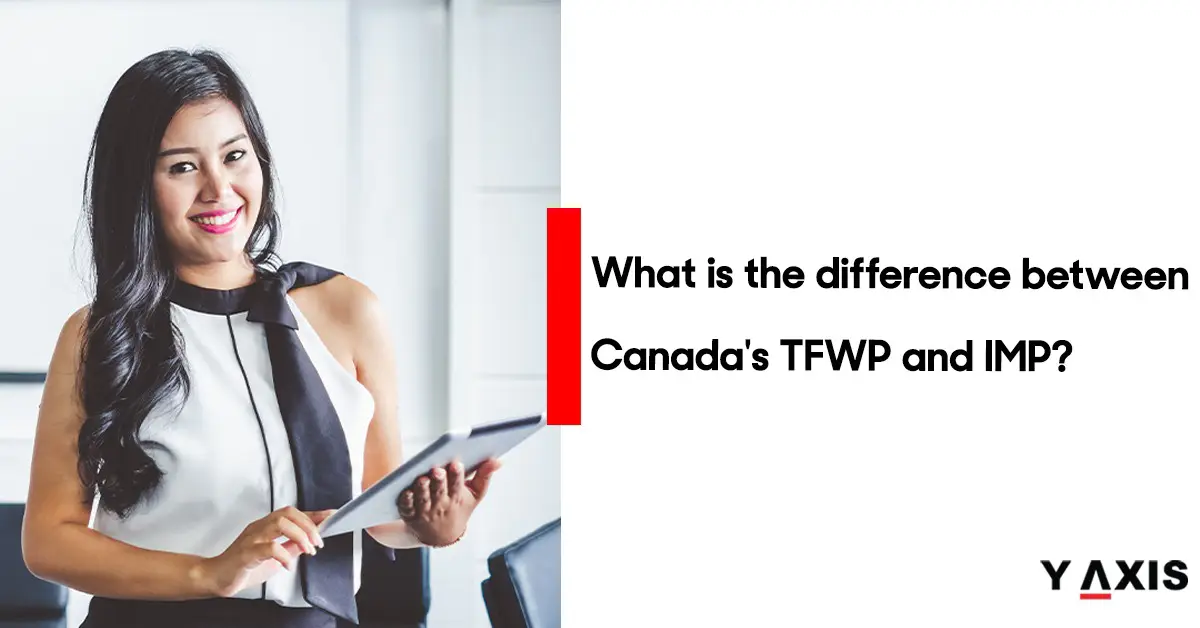Posted on January 04 2023
What is the difference between the TFWP and IMP, the two pathways for a Canada work permit?
By , Editor
Updated September 23 2024
Highlights: Various pathways for Canada work permit
- To work in Canada, an international professional needs a work permit.
- The Temporary Foreign Worker Program and International Mobility Program are popular work permit pathways.
- TFWP aims to support the job market in Canada.
- IMP strengthens the relations of Canada with other countries.
- The two pathways aid in boosting the economy of Canada.
*Check your eligibility to Canada through Canada Immigration Points Calculator.
Abstract: Know about the TFWP and IMP, the two most popular pathways to work in Canada.
Canada has around 100 pathways for foreign nationals to come and work in the country. Most of these pathways are categorized under two programs. They are:
- TFWP or Temporary Foreign Worker Program
- IMP or International Mobility Program
The TFWP and the IMP help in boosting Canada's economy. Read on to learn the differences between the two pathways.
*Wish to work in Canada? Y-Axis offers the required guidance.
What are the goals of the two Canada work permit pathways?
The goals of the two pathways are given in detail below.
-
TFWP or Temporary Foreign Worker Program
The TFWP's primary goal is to boost the job market in Canada by providing employers in the country with ways to hire international professionals. It addresses workforce shortages when there are no suitable candidates in Canada to fill job vacancies.
The intent of the TFWP program is to help Canadian employers and the residents by offering them the primary opportunity to apply for job vacancies. It is focused on addressing the needs of the job market for particular occupations and regions in Canada.
-
IMP or International Mobility Program
The IMP intends to promote the social, economic, and cultural policies of Canada by facilitating international professionals to arrive in Canada and strengthen Canada's ties with other countries. It also aims to promote the culture, sports, arts, and religion in Canada.
The IMP aims to offer benefits to Canadians living abroad by focusing its program on bilateral and multilateral agreements with other countries.
Read More…
New NOC TEER job codes in Canada released for FSTP and FSWP, 2022-23
Wages rose by 7.5 percent in Q3 of 2022, says Canada job vacancy report
Do the programs require LMIA?
An LMIA or Labor Market Impact Assessment is a document submitted by the employer as proof that hiring international professionals is not harmful to the native Canadian workforce.
The requirement of LMIA for the two different programs is given below.
-
TFWP
The TFWP requires employers to provide an application for LMIA. THE ESDC, or Employment and Social Development Canada, is responsible for the LMIA, and IRCC, or Immigration, Refugees and Citizenship Canada, is responsible for the consequent work permit application.
-
IMP
The IMP is exempted from LMIA. Canadian employers are not required to submit an LMIA report for international candidates wanting to work in Canada under this program.
Who leads the two programs?
The TFWP is led by ESDC but managed together by IRCC and ESDC.
The IMP is solely led and administered by IRCC.
Read More…
How to apply for Canada work permit under FTA?
Influence of income involved on the eligibility in these programs
The TFWP uses income rather than NOC or National Occupational Classification to assess applicability, and requirements of the program will vary due to the income offered.
The IMP does not consider the income of the candidate.
Are the work permits in the program open?
The work permits in the TFWP are employer-specific. It implies that international professionals applying for a job can work under a single employer who obtained an LMIA report and temporary work permit.
The work permit in the IMP can either be specific to a single employer or open. It implies that, on the basis of the agreement or situation of the candidate, their work permit can be to one employer or work for any employer in Canada.
At present, Canada has over 1 million job vacancies with lucrative income. It is a good time for foreign nationals to migrate to Canada for employment.
Do you want to work in Canada? Contact Y-Axis, the leading Work Abroad Consultant.
If you found this blog helpful, you may want to read…
Canada creates an all-time record! 431,645 Canada PRs issued in 2022
Tags:
Canada Work Permit
Work in Canada
Share

